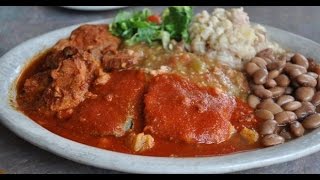Friday, 26 December, 2025г.
















Где искать: по сайтам Запорожской области, статьи, видео ролики
пример: покупка автомобиля в Запорожье
Early New Mexico Weavings: How to Identify and Price New Mexico Rugs
How to identify New Mexican and Chimayo blankets and distinguishing them from Mexican Saltillo blankets and Navajo weavings. Dr. Mark Sublette shares tips from 25 years of experience handling Navajo and Hispanic weavings.
Website: https://www.medicinemangallery.com
Facebook: https://www.facebook.com/medicinemangallery
Instagram: https://www.instagram.com/medicinemangallery
Podcast: https://itunes.apple.com/us/podcast/art-dealer-diaries/id1384036101?mt=2
Early New Mexico Weavings how to Identify and Price
When we talk about Hispanic or Mexican weavings, we’re generally talking about those early pieces such as this, which is a classic Saltillo Serape, and they were made anywhere between about the 1750s to about 1870, but there was another class of weavings that were made in New Mexico.
You have to remember that New Mexico was part of Spain; in fact, it was a part of Spain until 1821, and then it became (with the revolution) part of Mexico, and became part of the United States in 1848. So, there was a long history in Santa Fe, especially from Santa Fe all the way up to Southern Colorado, of making blankets. The earliest people that we know that visited in from Mexico to New Mexico were the Bazan brothers, Ignacio and Juan Bazan, who came in 1805 to help with their weaving, because the weavings that were being produced in New Mexico at that time were very loose in coarse, compared to something like this which is a classic Saltillo Serape, which is being made.
The New Mexico weavings were very poor in quality. So, the Bazan brothers worked with the Hispanic weavers in Santa Fe to help them bring up their weaving skills. This is an example of a piece that would have been made around the 1890s. This has aniline dyes, as does this blanket behind me, and you can see the Saltillo center is very reminiscent of the other classic New Mexico blankets. This is a piece that was probably made in 1880s to 1890s, and it has all aniline dyes, versus this, which is the classic piece with all natural dyes because synthetic dyes weren't even invented till 1856 when William Perkins found coal tar dyes.
Now, after these blankets, which we call Rio Grande blankets, and they're called that because they're made along the Rio Grande watershed anywhere from Albuquerque to again southern Colorado. About the turn of the century they stopped making blankets that were to be used and worn, and traded two blankets called Chimayo or Chimayo Blankets.
Now the Chimayo blankets are still made today – often these have designs such as birds, and what we call pan-Indian designs. In fact, they were marketed early on as the Chimayo Indians. They were Hispanic weavers, actually, and they didn't use a vertical or aboriginal limb; they used a horizontal or treadle limb. This piece right here was made in about the 1870s, and I got it from an individual whose grandmother bought it around the turn of the century in southern Colorado as a Chimayo Indian blanket, though in reality this is an early Rio Grande blanket.
So, there is mixed culture that you'll see in these weavings. In fact, when you think of Hispanic blankets, you also see designs that the Navajo used when they were interned at Bosque Redondo in 1864 to 1868. Some of the blankets they got were these Hispanic blankets from the Rio Grande watershed. The Rio Grande blankets and some of the design elements were transferred into Navajo usage.
In fact, you'll see these especially in the later blankets that are the Germantown weavings and in some of the Eye Dazzlers. So, when you think of Hispanic blankets you can think of early Mexican blankets – these are very valuable, and to a lesser extent, the Rio Grande blankets, which are also very beautiful and have value but not at the same level as a classic Saltillo Serape weavings.
Теги:
rio grande blanket chimayo blanket saltillo blanket mexican blanket Chimayo buying old mexican blankets selling old mexican blankets prices of mexican blankets navajo blanket Vallero star hispanic weavings Native American
Похожие видео
Мой аккаунт


 У вашего броузера проблема в совместимости с HTML5
У вашего броузера проблема в совместимости с HTML5


